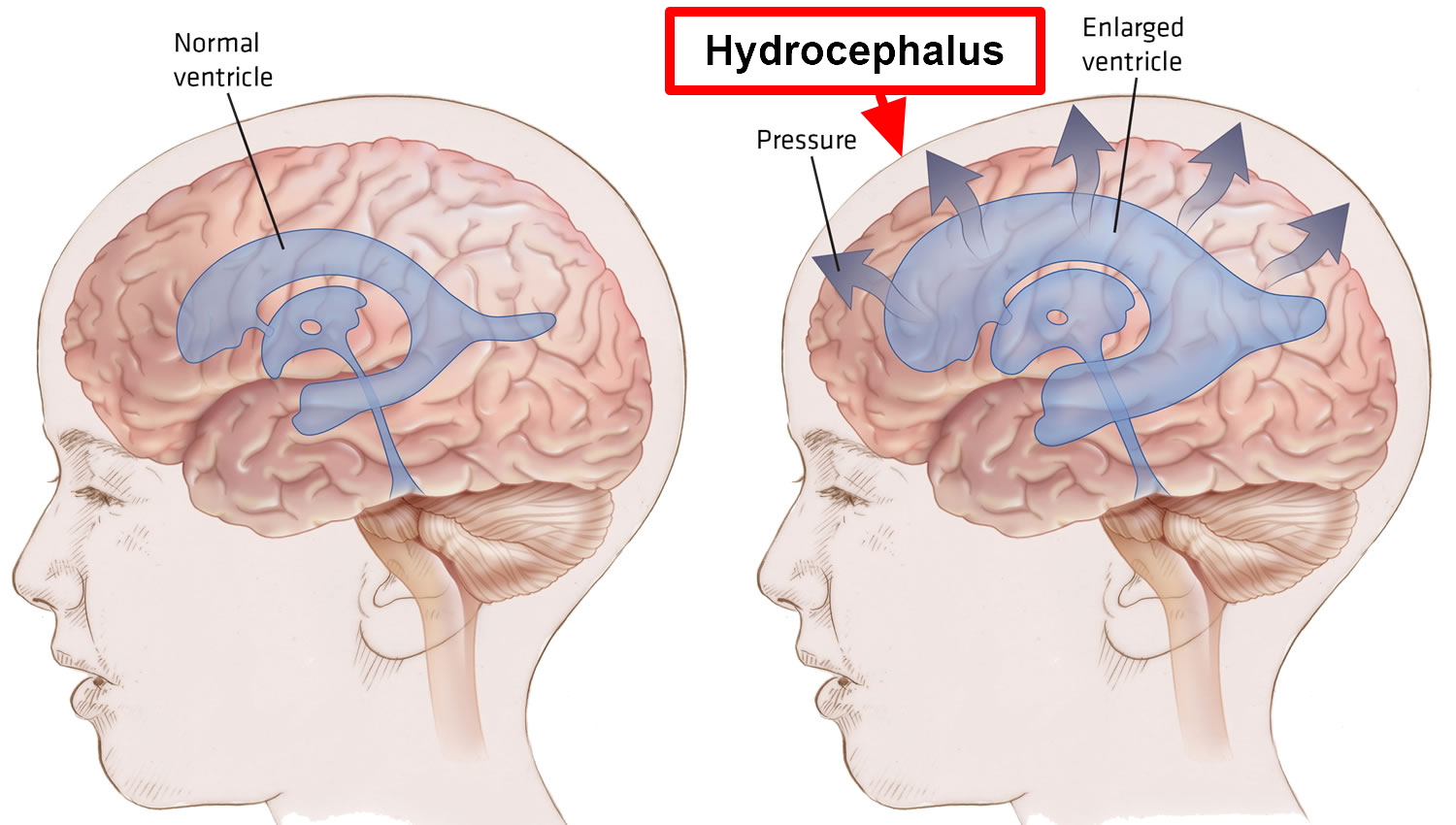Congenital Hydrocephalus: Symptoms, Causes, Treatment
What are the symptoms of congenital hydrocephalus?
Congenital hydrocephalus is a condition that is present at birth and is characterized by an abnormal accumulation of cerebrospinal fluid (CSF) in the brain, leading to increased pressure inside the skull. The symptoms of congenital hydrocephalus can vary depending on the severity of the condition and the age of the child, but may include:
- Enlarged head: An abnormally large head size (macrocephaly) or a rapid increase in head size may be noted. The head may appear disproportionately large compared to the rest of the body.
- Bulging fontanelle: The soft spot on an infant’s head (fontanelle) may bulge or be tense.
- Sunsetting eyes: The eyes may appear to gaze downward, with the whites of the eyes visible above the irises.
- Vomiting: Vomiting, especially in the morning, may occur due to increased pressure on the brain.
- Irritability: Irritability or changes in behavior may be observed.
- Feeding difficulties: Infants with hydrocephalus may have difficulty feeding or may feed poorly.
- Seizures: Seizures may occur in some infants with congenital hydrocephalus.
- Developmental delays: Children with congenital hydrocephalus may experience delays in reaching developmental milestones, such as sitting up, crawling, and walking.
- Muscle stiffness or weakness: Children with hydrocephalus may experience muscle stiffness or weakness, which can affect their ability to move and control their limbs.
- Urinary incontinence: Loss of bladder control may occur in some cases.
It’s important to note that the symptoms of congenital hydrocephalus can vary widely among affected individuals, and some children may not show any symptoms until later in infancy or childhood. If congenital hydrocephalus is suspected, prompt medical evaluation and treatment by healthcare providers are important to prevent complications and improve outcomes.
What are the causes of congenital hydrocephalus?
Congenital hydrocephalus, which is present at birth, can have various causes, including:
- Developmental abnormalities: Congenital hydrocephalus can occur when there is a structural abnormality in the brain that obstructs the flow of cerebrospinal fluid (CSF) or impairs its absorption. This can include conditions such as aqueductal stenosis, where the narrow passageway between the ventricles of the brain is blocked or narrowed, hindering the flow of CSF.
- Genetic factors: Some genetic syndromes or chromosomal abnormalities are associated with an increased risk of hydrocephalus. For example, certain genetic mutations can affect the development of the brain and lead to hydrocephalus.
- Infections during pregnancy: Infections contracted by the mother during pregnancy, such as cytomegalovirus (CMV), toxoplasmosis, or rubella, can increase the risk of congenital hydrocephalus in the fetus.
- Hemorrhage: Bleeding into the brain, either before or after birth, can lead to the development of hydrocephalus.
- Maternal factors: Certain maternal factors, such as gestational diabetes or exposure to certain medications or toxins during pregnancy, may increase the risk of congenital hydrocephalus.
- Unknown causes: In some cases, the cause of congenital hydrocephalus may not be known.
It’s important to note that congenital hydrocephalus is a complex condition with multiple potential causes, and in many cases, the exact cause may not be identified. Early diagnosis and treatment are important to prevent complications and improve outcomes for infants with congenital hydrocephalus.
What is the treatment for congenital hydrocephalus?
The treatment for congenital hydrocephalus, which is present at birth, typically involves the surgical placement of a shunt or the performance of an endoscopic third ventriculostomy (ETV) to help drain excess cerebrospinal fluid (CSF) from the brain and reduce pressure inside the skull. The choice of treatment depends on the underlying cause of hydrocephalus, the age and health of the child, and the severity of the condition. Treatment options for congenital hydrocephalus may include:
- Shunt placement: A shunt is a thin tube that is surgically implanted in the brain to drain excess CSF into another part of the body, such as the abdomen (ventriculoperitoneal shunt) or the heart (ventriculoatrial shunt). The shunt helps maintain normal levels of CSF in the brain and prevents fluid buildup.
- Endoscopic third ventriculostomy (ETV): In this procedure, a neurosurgeon creates a hole in the floor of the third ventricle of the brain, allowing CSF to flow out of the ventricles and into the surrounding tissues, where it can be absorbed. ETV is usually performed in cases where the hydrocephalus is caused by a blockage in the CSF flow, such as aqueductal stenosis.
- Monitoring and follow-up care: After treatment, regular monitoring is necessary to ensure that the hydrocephalus is properly managed and to watch for any signs of complications or recurrence. This may involve regular visits to a neurologist or neurosurgeon for evaluation and imaging studies, such as MRI or CT scans.
- Medications: In some cases, medications may be used to reduce the production of CSF or to treat underlying conditions that may be contributing to hydrocephalus, such as infections or tumors.
The goal of treatment for congenital hydrocephalus is to relieve symptoms, prevent complications, and improve quality of life. With proper management, many children with congenital hydrocephalus are able to lead normal lives. However, regular monitoring and follow-up care are essential to ensure the best possible outcomes.




